Abraham Lincoln rose from a nearly non-existent formal education to become the 16th President of the United States. In a brief biography provided to friends endorsing his 1860 nomination he wrote “I could read, write, and cipher to the Rule of Three; but that was all.” That was the extent of his formal schooling.
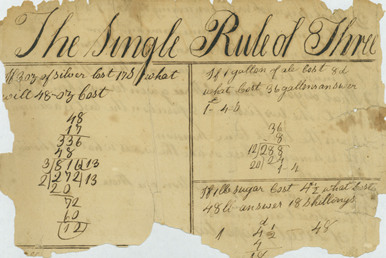
Page from Lincoln’ sum book. Photo courtesy Library of Congress.
Anyone with an interest in Lincoln – or frontier schooling in general – has likely heard those words, but very few people probably know what they mean. The reading and writing make sense, but “ciphering to the rule of three?”
It turns out the “rule of three” is a way of solving proportions, what we more commonly today call “ratios.” It is a form of cross-multiplication in which the problem is set up such that the unknown quantity is the last “extreme” in a series of numbers exhibiting a proportional relationship. The basic form is:

The idea is to determine the value of x when you know the values of a, b, and c. The Rule of Three states that you simply rearrange this simple ratio formula into:

Another way of looking at it is by laying out the three known terms in a linear sequence (a –> b –> c) and then multiplying the last term (c) by the middle term (b) and then dividing that product by the first term (a).
That’s it. Not very complicated on its face, but this simple rule could incorporate not only multiplication and division but also addition and subtraction. Lincoln likely used it to figure out proportions and costs for different supplies during the time he was a young storekeeper in New Salem. Of course, Lincoln went on to learn long division and other math functions as well, not to mention he mastered the six books of Euclid geometry. He also taught himself the law, political oratory, and the logical thinking that helped him define the slavery debate and, eventually, make him one of our greatest presidents.
Not bad for a guy with less than a year of formal schooling.
[The above is adapted from my book, Lincoln: The Fire of Genius and an article published in The Lincolnian, a publication of the Lincoln Group of the District of Columbia.]

Lincoln: The Fire of Genius: How Abraham Lincoln’s Commitment to Science and Technology Helped Modernize America is available at booksellers nationwide.
Limited signed copies are available via this website. The book also listed on Goodreads, the database where I keep track of my reading. Click on the “Want to Read” button to put it on your reading list. Please leave a review on Goodreads and Amazon if you like the book.
You also follow my author page on Facebook.
David J. Kent is President of the Lincoln Group of DC and the author of Lincoln: The Fire of Genius: How Abraham Lincoln’s Commitment to Science and Technology Helped Modernize America and Lincoln: The Man Who Saved America.
His previous books include Tesla: The Wizard of Electricity and Edison: The Inventor of the Modern World and two specialty e-books: Nikola Tesla: Renewable Energy Ahead of Its Time and Abraham Lincoln and Nikola Tesla: Connected by Fate.



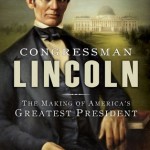 Author Chris DeRose takes a more detailed look at a period in Abraham Lincoln’s life that is normally glossed over in other biographies – his single term as a U.S. Congressman. The first few chapters highlight the political status of the time, as well as the political wrangling between different factions both within and external to the Whig party. The book goes into various aspects of the key question of the day, slavery. Doing so makes it clear that the post-Civil War reinvention of history to suggest the South wasn’t fighting to maintain and expand slavery is hogwash.
Author Chris DeRose takes a more detailed look at a period in Abraham Lincoln’s life that is normally glossed over in other biographies – his single term as a U.S. Congressman. The first few chapters highlight the political status of the time, as well as the political wrangling between different factions both within and external to the Whig party. The book goes into various aspects of the key question of the day, slavery. Doing so makes it clear that the post-Civil War reinvention of history to suggest the South wasn’t fighting to maintain and expand slavery is hogwash.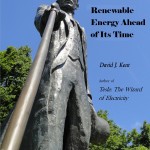 Solar and wind energy, along with hydroelectric power, may seem like recent ideas, but Nikola Tesla had them in his sights a long, long time ago. As this post goes up on Science Traveler, the new
Solar and wind energy, along with hydroelectric power, may seem like recent ideas, but Nikola Tesla had them in his sights a long, long time ago. As this post goes up on Science Traveler, the new 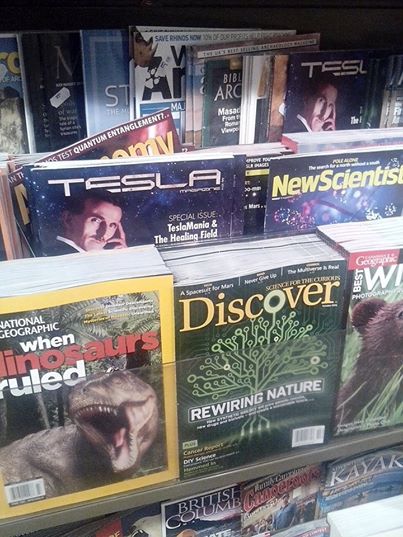
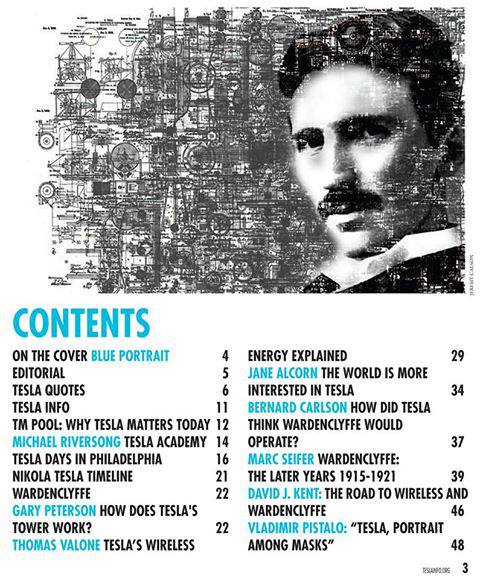
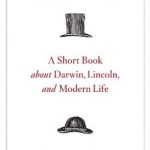 The title comes from the controversy (assuming you knew there was a controversy) over whether Edwin Stanton, upon Lincoln taking his last breath, said “Now he belongs to the ages” or “Now he belongs to the angels.” With this contrivance as a starting point Gopnik presents what amounts to six essays.
The title comes from the controversy (assuming you knew there was a controversy) over whether Edwin Stanton, upon Lincoln taking his last breath, said “Now he belongs to the ages” or “Now he belongs to the angels.” With this contrivance as a starting point Gopnik presents what amounts to six essays.
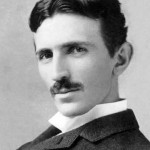 Nikola Tesla believed that the thermo-dynamic process, i.e., the burning of fossil fuels, was “wasteful and barbarous.” He foresaw the limitations on supply and the inherent dangers to man and the environment (though even Tesla couldn’t anticipate the impacts of fossil fuels on climate change). “Whatever our resources of primary energy may be in the future,” Tesla argued, “we must, to be rational, obtain it without consumption of any material.” He believed that natural, renewable, sources of energy could “eliminate the need of coal, oil, gas or any other of the common fuels.” Two of the renewable energy sources that he investigated were hydrothermal and geothermal energy.
Nikola Tesla believed that the thermo-dynamic process, i.e., the burning of fossil fuels, was “wasteful and barbarous.” He foresaw the limitations on supply and the inherent dangers to man and the environment (though even Tesla couldn’t anticipate the impacts of fossil fuels on climate change). “Whatever our resources of primary energy may be in the future,” Tesla argued, “we must, to be rational, obtain it without consumption of any material.” He believed that natural, renewable, sources of energy could “eliminate the need of coal, oil, gas or any other of the common fuels.” Two of the renewable energy sources that he investigated were hydrothermal and geothermal energy.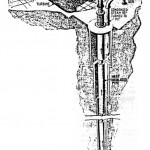 There are temperature differentials in the earth as well. In 1900 Tesla was already contemplating what today we call geothermal energy. In a somewhat long-winded and metaphysical treatise called “The Problem of Increasing Human Energy,” Tesla wrote that “it is a well-known fact that the interior portions of the globe are very hot, the temperature rising, as observations show, with the approach to the center at the rate of approximately 1 degree C. for every hundred feet of depth.”
There are temperature differentials in the earth as well. In 1900 Tesla was already contemplating what today we call geothermal energy. In a somewhat long-winded and metaphysical treatise called “The Problem of Increasing Human Energy,” Tesla wrote that “it is a well-known fact that the interior portions of the globe are very hot, the temperature rising, as observations show, with the approach to the center at the rate of approximately 1 degree C. for every hundred feet of depth.” Abraham Lincoln is the only president to ever get a patent, an ingenious, though impractical, method for lifting boats over shoals. This interest in technology served him well during the Civil War as battles increasingly relied on mechanization for transportation, communication, and weaponry.
Abraham Lincoln is the only president to ever get a patent, an ingenious, though impractical, method for lifting boats over shoals. This interest in technology served him well during the Civil War as battles increasingly relied on mechanization for transportation, communication, and weaponry.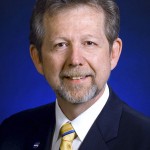 Abraham Lincoln’s Air Force – Balloons in the Civil War
Abraham Lincoln’s Air Force – Balloons in the Civil War Abraham Lincoln and the Technology of War
Abraham Lincoln and the Technology of War One year ago today I left behind the first half of my life. After more than 30 years as a working scientist I had decided to give up a comfortable salary for a life of (essentially) no income. I would become a poor starving writer.
One year ago today I left behind the first half of my life. After more than 30 years as a working scientist I had decided to give up a comfortable salary for a life of (essentially) no income. I would become a poor starving writer.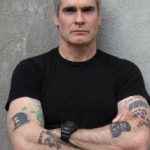 Way back in May I was contacted by a producer for a TV series for the History Channel called “10 Things You Don’t Know About,” hosted by Henry Rollins. They were interested in doing a program on the rivalry between Thomas Edison and Nikola Tesla. I spoke with the producer and provided my thoughts on what interesting facts they could include, and although I didn’t make it into the final program, it aired on September 7, 2014.
Way back in May I was contacted by a producer for a TV series for the History Channel called “10 Things You Don’t Know About,” hosted by Henry Rollins. They were interested in doing a program on the rivalry between Thomas Edison and Nikola Tesla. I spoke with the producer and provided my thoughts on what interesting facts they could include, and although I didn’t make it into the final program, it aired on September 7, 2014.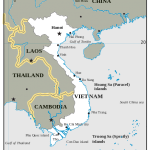 I went to Hanoi before going to Hanoi became cool. Long after the Vietnam War but before the United States normalized relations with the unified communist nation, my first major trip out of the country was to a place that remains very much foreign to most Americans.
I went to Hanoi before going to Hanoi became cool. Long after the Vietnam War but before the United States normalized relations with the unified communist nation, my first major trip out of the country was to a place that remains very much foreign to most Americans.






